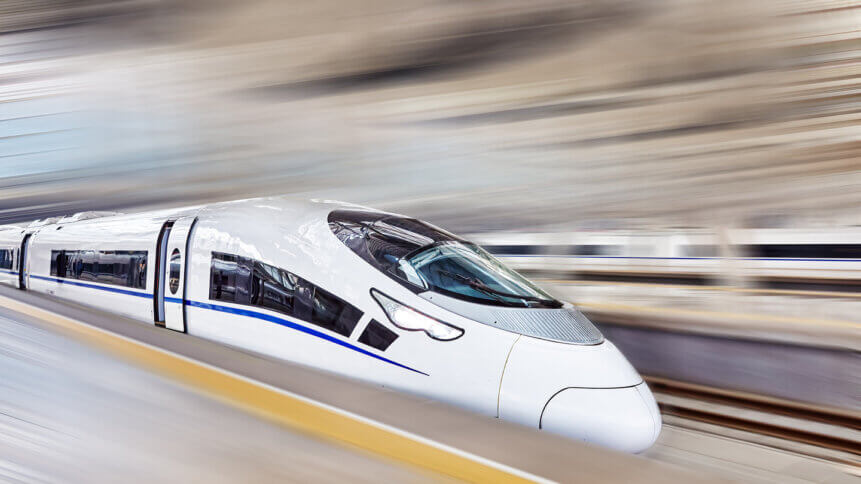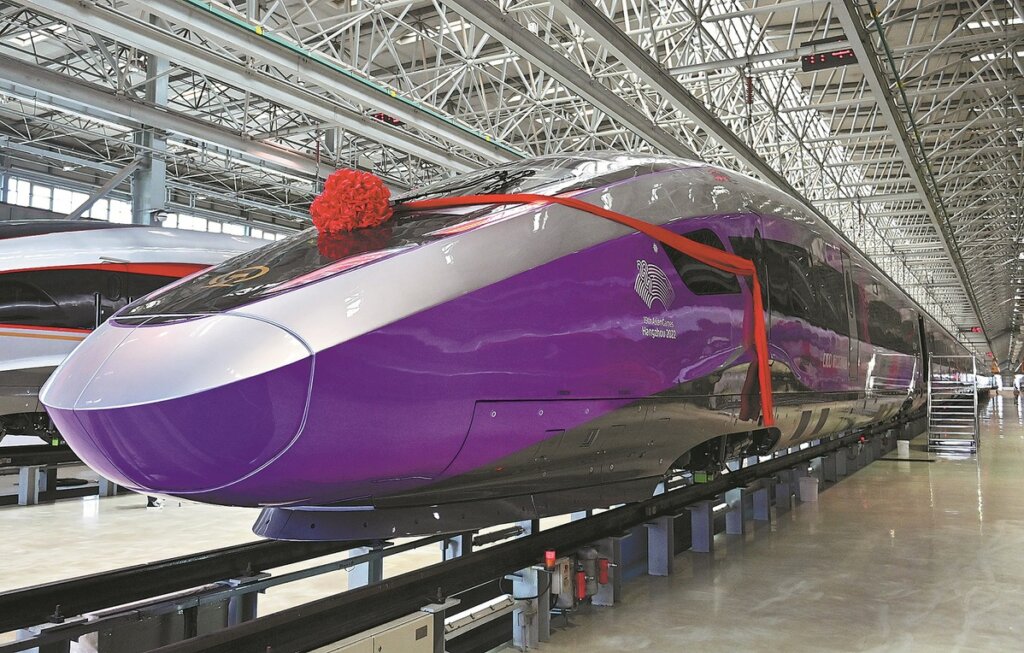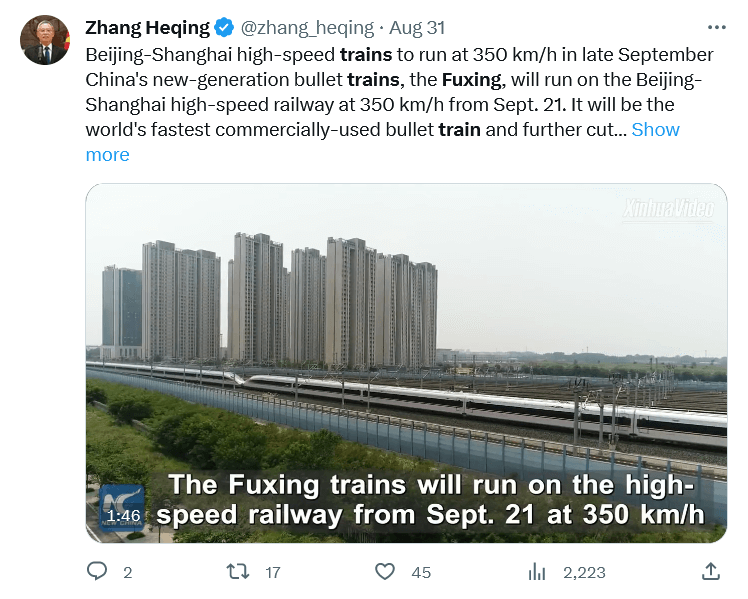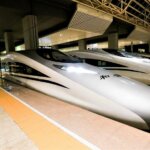The tech taking Chinese trains to the top of global leaderboards

- China’s high speed rail network is world-leading and uses exclusively China-made tech.
- It’s in a whole other league for speed and stability.
- We run through the technology it uses, from materials used to aerodynamics.
While the world watches China’s chip development in the race against the US, Chinese technologies in other sectors are being overlooked. One of those is the country’s impressive high speed rail infrastructure.
The network consists of 40,000km of tracks, giving China the title of most high speed rail in the world. The technology behind China’s high speed trains represents a historic breakthrough in long distance travel.
The Fuxing bullet train, which recently departed on its first journey through mountainous Guizhou, travels at speeds of up to 350km an hour. Travelling by high speed rail, passengers can make the journey from Beijing to Shanghai in just four hours, compared to previous travel times of 37 hours.
Despite the high speeds that the train reaches, within the carriages of the bullet train everything is very stable. To demonstrate this, passengers have balanced objects – like coins on their sides – while travelling at top speeds on China’s high speed rail.
To enable such high speeds, several technologies are put to work. Notably, all of the technical breakthroughs were made by China, which holds all the intellectual property rights.
The optimized aerodynamic head at the front of the trains effectively reduces air resistance. Of course, fans of the Concorde know that aerodynamics aren’t a recent breakthrough. What makes it special is the material it’s made from, which withstands extreme air force.

China’s high speed rail sees Fuxing train climb mountains. Via ChinaDaily.com
The material is called “super thin large hollow aluminium” (what a mouthful) that, although incredibly durable, isn’t at all heavy and thus doesn’t reduce speed.
Another innovation that the high speed train employs is a high-power traction system. Traditionally, a train would have one locomotive at the front, distributing traction as speed increases.
In the case of China’s high speed rail network, engineers divided the load over several engines, and now there are four to six locomotives on each high speed train. This might generate higher costs, but there are new technologies in use to offset these, too.
Read how infrastructure costs could be cut using the BeiDou Navigation Satellite System here.
As the maiden voyage of high speed trains into the mountains was recently made, trains running in China have to endure extreme locations that the infrastructure serves.

Who doesn’t want to get from A-B in style, comfort, and practically outrageous speed?
As well as the Guizhou province, the trains serve the plateau and desert in north-western China and cities in southern China which have a three-month rainy season each year.
Not only is travel by rail more efficient, its ecological impact is far less damaging than travel by car and plane. Leading the way in technologies that enable high speed rail travel, China is setting a global precent. Will the rest of the world follow suit? Can the West swallow its pride and buy the Chinese technologies, or will we have to wait and watch for more local development?











